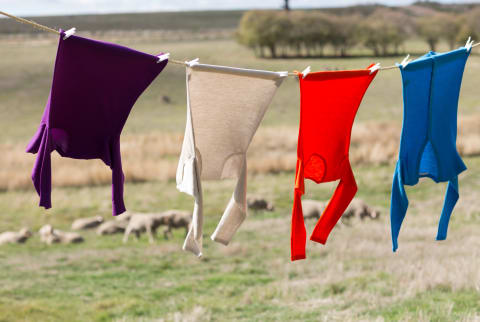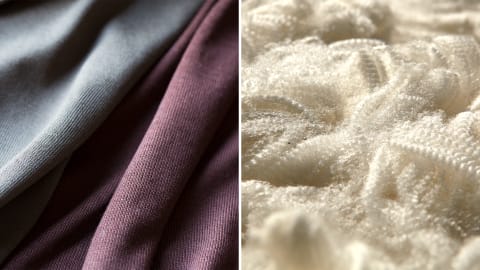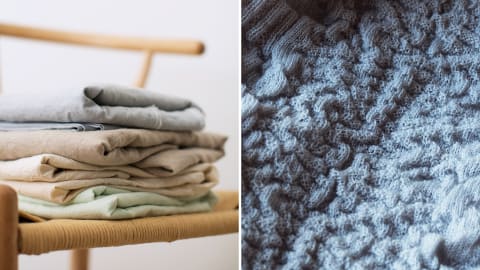That makes it tricky for us as consumers, too. We can all agree that cutting out single-use plastic and eating mostly plants are positive goals, but what does sustainability look like when it comes to buying new clothes? The good news is “sustainable shopping” doesn’t have to be a total misnomer: From supporting Fair Trade brands to buying local or secondhand, we’ve got a solid number of strategies to help us get started with building a wardrobe that’s better for the planet. Covering them all in depth would be enough to warrant dozens of posts, but we take a closer look at one below! As consumers, we do have power when it comes to the decisions we make: Being more intentional about each purchase can help slow down the cycle, even if you don’t shop at traditional “fast fashion” retailers. Not sure where to start? Here are four things to consider when stocking your closet to make the most out of reducing, reusing, and recycling: A note on natural fabrics: Just because a shirt’s label reads 100% linen doesn’t mean it’s high quality. Fiber authenticity and quality can be assured by a variety of certifications. Woolmark, for example, is the global authority on wool—look out for its iconic logo, which certifies a product’s wool content quality and purity. (You’ve probably seen it on the labels of Merino wool pieces from eco-minded brands including 3.1 Phillip Lim and Tracksmith.) The Woolmark logo guarantees fiber quality and authenticity for all of the material’s myriad uses. What’s more, blended, synthetic fabrics often don’t retain shape and fit with repeated laundering the way natural fibers can. Australian Merino wool, for instance—which is 100% natural, renewable, and biodegradable in both land and marine environments—isn’t just wrinkle-resistant but odor-resistant and naturally breathable, too. It’s great at absorbing moisture away from our body to evaporate into the air and keep us dry. This helps keep us cool in warm weather, and warm in cooler weather—a seasonally versatile and environmentally friendly material for both high-end investment pieces and high-performance activewear. That’s a win-win. What’s more, according to a recent Nielsen study that dove into the laundry habits of consumers across the world (as part of the Woolmark Company’s Global Wardrobe Study), wool items tend to be washed less frequently than clothes made from other fibers, at lower temperatures, to boot, saving you both time and money. Some materials, like Merino wool, are made for this. Wool is the most reused and recycled fiber of all common apparel fibers—often getting second, third, or fourth lives thanks to its durability as a garment. Beyond that, wool can be reused in insulation for cars, mattresses, and other items, too. And if wool garments end up getting tossed out, the fabric—as a natural and biodegradable fiber—can decompose in a matter of years, leaving little impact on the earth.









